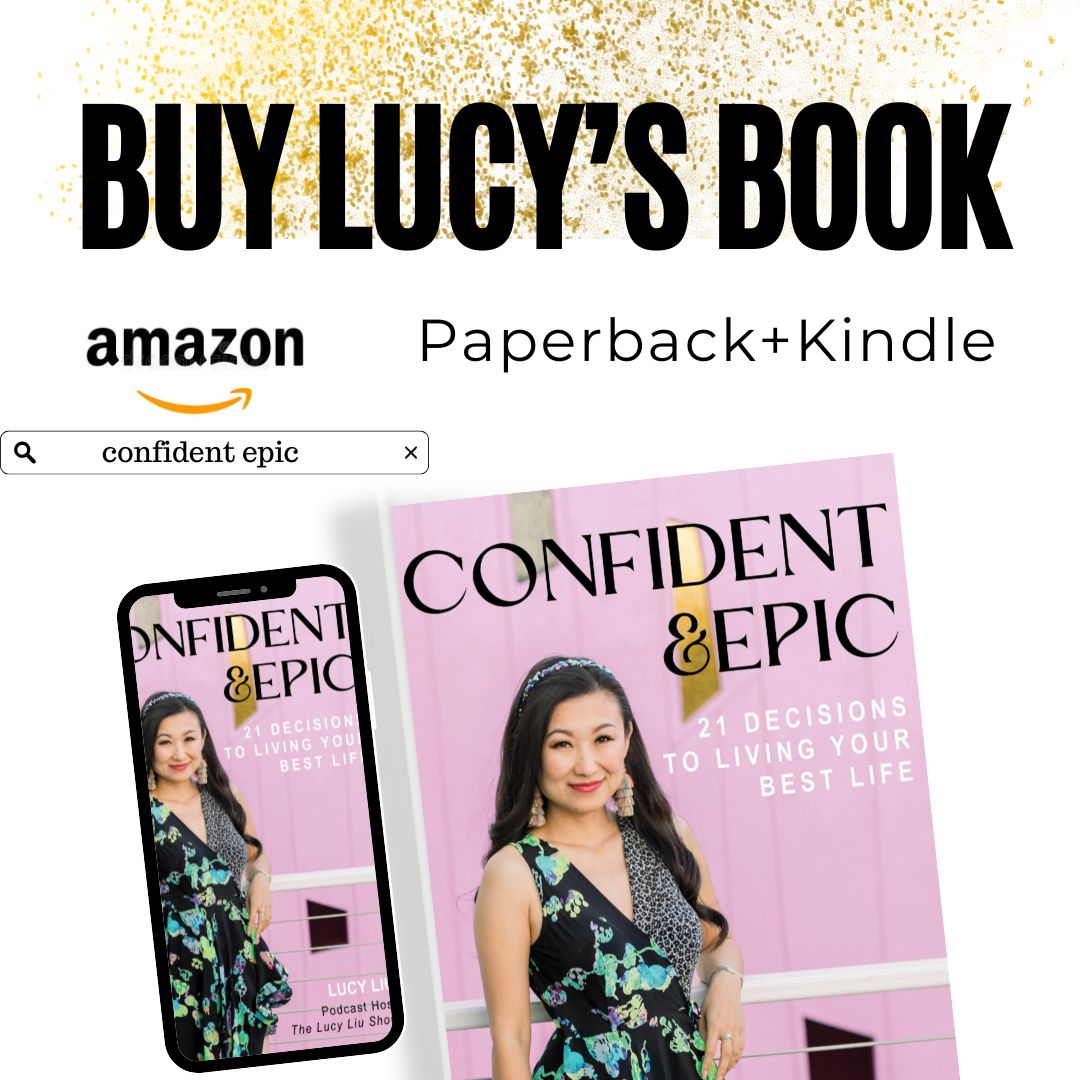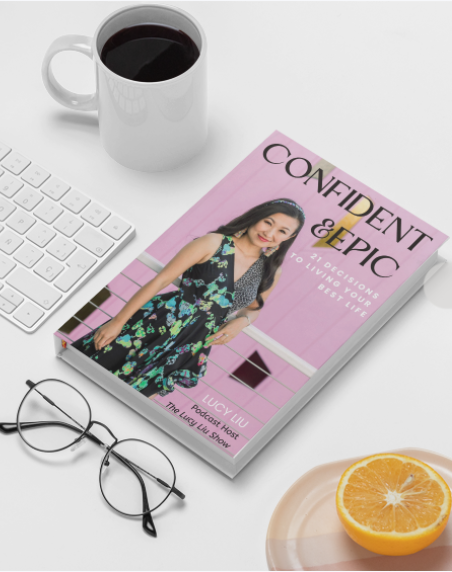256. How To Network with Confidence & Purpose with Emily Merrell
Hello my friend, Networking is the key to unlocking opportunities, building meaningful relationships, and accelerating your personal and professional growth. This episode is for you if you find networking intimidating and wish to learn how to better network like a pro with more confidence and more purpose for growth.
And for this exact reason, I have my special guest with me today Emily Merrell. Emily is a networking strategist, business coach, community builder and podcast host to two podcasts actually, the Ready Set Coach Podcast and The Second Degree Podcast.
LISTEN TO THE PODCAST
WATCH THE EPISODE
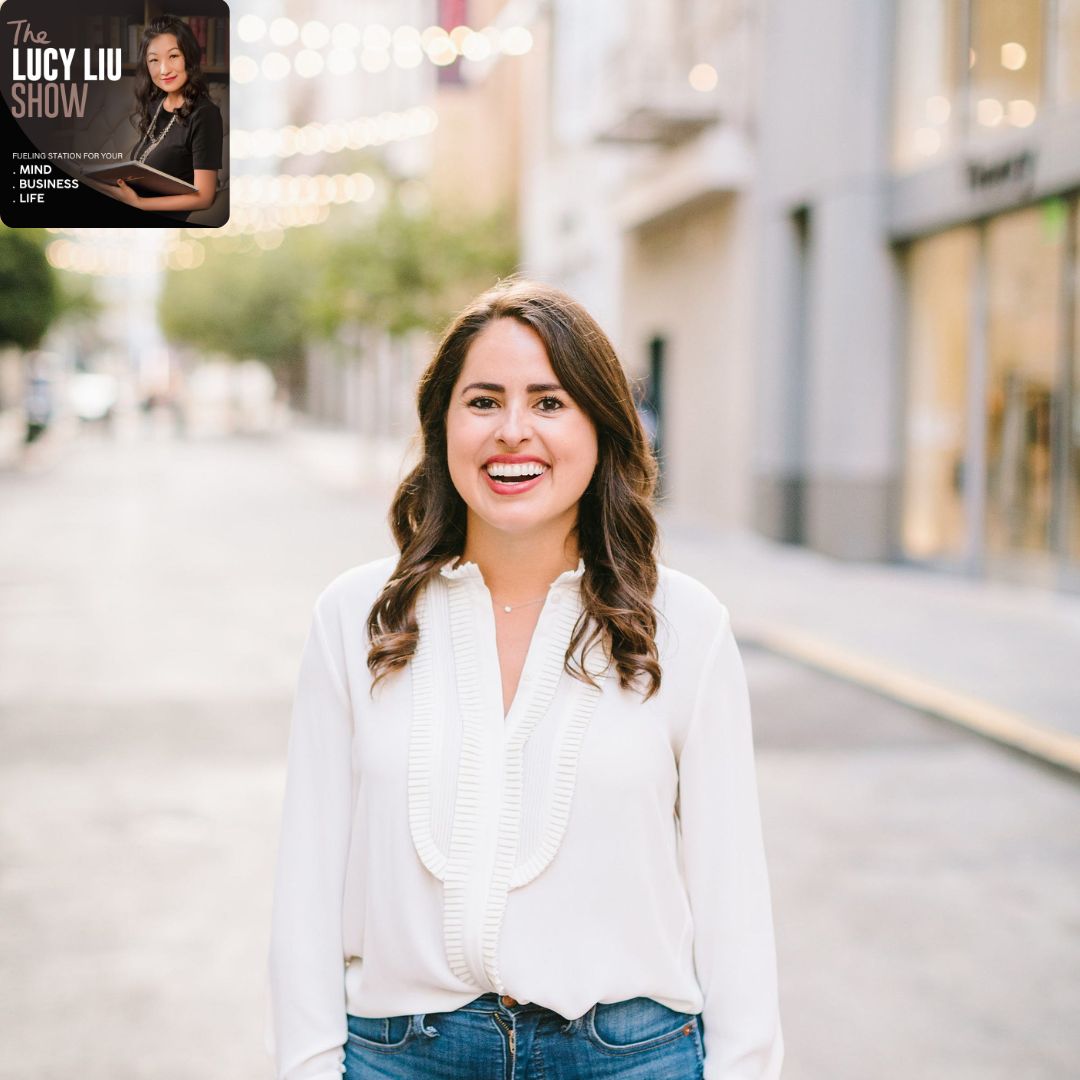
Connect with Emily Merrell
Connect with Lucy:
Instagram: https://www.instagram.com/mslucyliu
Facebook: https://www.facebook.com/mslucyliu
Twitter: https://www.twitter.com/mslucyliu
LinkedIn: https://www.linkedin.com/in/mslucyliu
TikTok: https://www.tiktok.com/@mslucyliu
YouTube: https://youtube.com/@mslucyliu
Website: https://www.lucyliucoaching.com
Podcast: https://www.lucyliucoaching.com/podcast
Wanna double your confidence in 30 seconds?
Get the ultimate secret here:
FULL EPISODE TRANSCRIPT
Hello, my friend, networking is the key to unlocking opportunities, building meaningful relationships and accelerating your personal and professional growth. So this episode is for you if you find networking intimidating sometimes and wish to learn how to better network like a pro with more confidence and more purpose for growth. And for this exact reason, I have my special guest with me today, Emily Merrell.
Emily is a networking strategist, business coach, community builder and podcast host of two podcasts, actually, the ready set coach podcast and the second degree podcast. Welcome to the show, Emily.
Thank you so much for having me.
It’s so fun to be in the interview ease seat, especially with people we’ve hugged in real life, right? And it was a lot warmer the last time I saw you in Palm Springs, 12 degrees here today in Denver.
It is really cold in LA to contrary to the sunny California, we have rain today. But let’s talk about networking. So many people find networking intimidating or scary, whether you’re introverted or extroverted, right?
So you are the go to person for networking. So how can someone shift their mindset to make it feel more natural?
Well, I just want to I want to reaffirm that if you are super extroverted, and super introverted, networking is to your point, it can be intimidating, and it can be awkward, and it can be overwhelming. And even as a professional networker, I feel those feelings as well. So as someone who has met 1000s and 1000s of people, those nerves still creep up on you of walking into a room full of strangers.
So one of my favorite things about thinking about networking is gamifying networking, like can you have a game plan when you walk into networking? And I think backing up even a little before that is so many people go to a networking event, and they say, Hey, Lucy, will you come to this networking event with me. And that’s a huge mistake.
Because Lucy, if you and I went to a networking event together, you and I would be in the corner gabbing it up, basically using our body language to close off inviting people to talk to us, because we’re so excited to catch up. So the first thing to think about is a networking event isn’t a chance to go hang out with a friend event. This is a chance to meet new people event.
So I highly recommend going alone, even though that can sound like your worst nightmare walking into a room full of strangers by yourself. Number two is make yourself approachable. So Lucy right now is wearing this beautiful red turtleneck.
And if I was at a networking event with her, I would be gravitated to the color that she is wearing kind of like a moth to a flame, I would probably approach her. And if I wanted to strike up a conversation with her, I would actually go for your jugular here, Lucy, where I would ask you, I would be like, I love that turtleneck. Like, where did you get something so vibrant.
So being able to wear something that is also attracting people to you is a great, great, great tip when walking into a room full of strangers. So in those circumstances, I typically recommend like fun earrings, if you’re an earring wearer, maybe some like creative glasses, I usually like to rock a bold red lip, it’s always an attention grabber and a conversation starter. So again, people can humanize you and you can start on a connection or a networking without it being so what do you do.
And then the last tip I will say is again, gamification, can you give yourself the expectation that you’re like, I’m going to meet two people and I’m going to get their contact info and that is going to be a success for me. So you have like a low bar of entry. And then if you walk out that night, and you’ve got like nine new friends or connections, then you really, really overdid yourself in one.
So again, wearing something colorful, so people come to you paying attention to going alone, looking at other people and what they’re wearing, so they’re easy to approach. And then giving yourself a goal of a connection of one or two people.
I’m like nodding my head left and right the whole time as you spoke, because I actually did a prior episode on why you should go to events alone, because I love going to events alone, like you talked about that forces you to make new connections and not just play catch up with your friend.
I have a networking event tonight, none of my friends are going. I am meeting my friends for dinner after my networking event. We have two different experiences happening in one day.
Beautiful. I’m a big believer that confidence is not about decibels. I am introverted, I can be the introvert in the room and still be confident.
How about you, Emily? How do you think introverts or more quieter people can thrive in a networking event without feeling like they have to be loud?
Oh, I love that question. I’ll just share it. My sister is exact opposite of me.
She is an introvert, but she loves being with people. And so the way that she’s able to show her love and bring people together, she loves hosting events. So I think for an introvert, a great tool or technique for you is to be in charge of planning the event or bringing the people together.
And even myself, who’s wildly, wildly extroverted. I love being the host of an event because then I could say, Hey, Lucy, why don’t you meet Sally? You guys are both from LA.
You’re both incredible coaches. I’m going to let you guys hit it off and then you can walk away. So you can be a facilitator of generosity of connection, but not be caught up in the small talk of having to hear someone’s life story.
Like a silent sniper type of thing where you’re again, bringing the people together. I also find as an introvert, but I have my introversion to me being in control of a situation gives an introvert less anxiety. So then they know when the event starts and when the event ends and what’s going to happen next versus walking in into an unknown.
And while that’s not the case, obviously for every introvert, I think also understanding like the play of the night or the agenda of the night is really helpful in your own managing your own anxiety and your energy, especially as an introvert, you have to be cognizant of not burning out too fast. So one of the mantras that I always have is when in motion, stay in motion. So for example, if you’re an introvert and it takes you a lot to get those batteries recharged to commit to coming to an event, make that a day where you are showering first thing in the morning, you are putting makeup on, you’re maybe working from a coffee shop.
So you’ve already left your house. And so you don’t have an excuse to bail on the event that night. So then that way too, you’ve already kind of like taken the steps that lead you to the event or networking experience you’re going to be participating in.
Perfectly said.
What are some of the common mistakes you’ve seen people make at networking events?
How much time do we have? Okay, my favorite mistake, my favorite mistake is calling people by the wrong name the whole night. I have seen that many times and it cracks me up more than makes me cringe.
But the biggest mistake I see is if walking into a room, they have like their glass of wine, they saunter up to a conversation, they look at you and they’re like, so what do you do, Emily? And I’m choking on a little Frank or something like that. I’m like, oh, cool.
That’s just not how I, my brain wasn’t there yet. I’m still warming up. So I think going right out of the gate with what do you do is just not always the best approach, especially for those introverts or people who aren’t accustomed to talking to themselves.
So I’ll add, if you want to know what someone does, there’s ways to, to get that out of them without strategic, without straightforwardly asking, what do you do? It could be like, are you in the film industry? If it’s a film networking event, you know, you can kind of read the cues.
Another thing too, is straight up pitching yourself and going up and being like, Hey, Lucy, you’re a coach. That means you probably want to invest in a new platform for da da da da da. Here’s my card.
I think we should hop on a and you’re just like taken aback by being sold to immediately. So tone down the selling. Remember that there’s an essence of give and take the last thing too.
I think networking is a lot like dating and we’ve all been on bad dates before where the date only talks about themselves. So remember to ask questions of others and ask questions that also allow you to drop in little nuggets about yourself. So you can ask a question that also has a relatable opportunity for you to pop in.
So those are my big three that really unsettled me.
They’re all so good. I do want to add one more is making it all about yourself. And I think this is the reason why people get intimidated of going to, because they’re, they’re so conscious about themselves.
They’re so conscious about what other people will think of themselves. So I always really preach that go in with the intention of adding value to someone else’s life in any way possible. And that way you’re focusing on the bigger picture, right?
You’re not just focusing on yourself, because when you focus on yourself, you tend to shrink 1000% and you’ll be more memorable.
You remember those conversations of the people who make you feel shiny versus the person who is just monologuing about their, their journey into X, Y, and Z. I do want to add with that too, on that being, oh my gosh, my brain is like going in and out of thoughts sometimes. But that feeling of when you walk into a network, networking event, body language, really big mistake is people aren’t paying attention to their body language.
So for example, like if you have your arms crossed and your shoulders are hunched by your ears, you’re telling me subconsciously, like go away. And if you’re on your phone, like, I think a lot of people make this mistake of self-importance. So they’re on their phone and they’re like, and you know, they’re kind of half listening again.
I don’t want to talk to you. So be cognizant of like how your shoulders are, how your body and your arms are, um, where your eye contact is because otherwise you might be subconsciously repulsive.
Beautifully said. You want to make a good lasting impression, especially the first impression when you meet someone new, right? I love the phone tip too.
I usually have my phone in my purse the whole time during an event. I don’t play with my phone because you’re there for the in-person connection. So make sure you’re actually being present, right?
And the only time I recommend people bring out their phone is if they don’t have business cards and they need to connect with someone and they can use, you can open the email app and pop in the person’s email and send them a quick, quick note. But yeah, to your point, put it away. Or the other thing too, I’ll say, um, like on my cover of my phone, I have a picture of my family.
You could use your phone as a tool of connectivity. So if you are like sitting at a high boy table and you’ve got your phone out and you’ve got that picture and you’re struggling to make conversation with someone else, you’d be like, Lucy, is that your dog? He’s so cute.
And it’s a good jumping off point.
What a good tip. Okay. So we’re at this networking event, but not everyone might be good for our professional growth.
Would you say you recommend networking with everyone or only identify the right people to network with?
It’s so funny.
I hate when people are like the right people, what defines right? Um, because that person might, I have met people who become attended my wedding, have become strong friends, have, have influenced my life in significant ways that had nothing to do with my career. So you, that hypothesis of right and wrong definitely is, it can hinder people when, when making connections.
So the way that I always like to approach it is, um, I do friend first and kind of see if we’re going to be friends and you can, you can vibe off the person. You can see if they’re on the same page as you. So oftentimes, like sometimes I’ll connect with someone and we have nothing in common in our jobs.
Maybe they’re a lawyer and I don’t know, they do patents and I’m just not in that world at all. Nor do I know anyone, but a that’s in my, the back of my brain for the future, because Lucy comes to me and she patented a new lotion that’s going to change the world. So a, I have that connection that I can give Lucy and be this girl is also obsessed with soul cycle and I’m obsessed with soul cycle.
So now I have a soul cycle buddy. And again, that ROI on a connection isn’t measured in me making money off of her, but it’s me making a deepening friendship that can lead to other life opportunities. So in the sense of energy, you don’t want to go and pray and spray on every single person there.
Uh, so again, going with that goal of connecting, doing a good connection with two or three people is really, really important. And in my brain, I start a little clock. I have like a 15 minute little timer that goes off in my brain.
And I’m like, Lucy, we are vibing. We are going to be hanging out when I’m in LA next. So at the end of that 15 minute clock in your brain part ways, because you are going to have so much more Lucy in the future.
And you know that for a fact, but then the next person you meet, maybe you never need to, or want to see again, but they are still human and you are still human. And you give them that 15 minutes of your time and have a mediocre conversation, and then you can part ways and go to the next person. Do you follow up with people then afterwards?
So I like to follow up in the moment. Um, so that’s where, you know, years ago I went to an event that took like a hundred of my business cards and I just started my business and was like, this is so annoying. They’re so expensive just to be thrown away.
And so from that point on, I started differentiating myself by creating, I created pop sockets that I’d give people. Um, and so then they had, it was branded and they could put it on their phone. Or the other thing that I did was I would grab their phone and I would put my email in it.
And then the connection that we had and like what we talked about, and I’d send myself an email from their phone. So then the next day it’s in my inbox, basically a running to-do list of all of these people that I met. And, you know, maybe it was, we were talking about dog food to recommendations, or maybe it was talking about looking for a new accountant.
So I had that follow-up action item in my to-do for the next day.
Great tip. I remember when we first met, you sent me an email the second day too. Right?
Yeah. You’re such a great connector. You’re good at referrals, connecting people, whether that’s virtual or online, because you, you are confident that you have something to provide value to others.
And I think that’s, that’s where confidence comes from is knowing that I have value, my self-worth is there. By knowing me, I’m going to provide you value, right? But what about for some, some people who are experiencing self-doubt, they, maybe they don’t feel they have much to offer.
Maybe they feel like they’re only in the beginning of their journey, or they’re not quite there yet because there’s always something else to improve, right? What are some ways to provide value in a networking relationship in such situation when you don’t feel like you have much to offer?
That’s such an insightful question, or interesting question to think about. I think we all have value. So you definitely have to seek out that value.
And while it might not feel as transactional as I have a good accountant for you to meet, there typically is something that you can give. And I do a lot of mentoring with college grads or recent or college seniors. And one of the things that the next generation has that we don’t have is they, they just know how to do tech so much better in so many ways.
So even offering to help with setting up a Canva or doing something with social media or something I’ve seen before at these events, I’ll bring up like I’m traveling and I’m looking for a dog sitter. And they’re like, I love dogs. I would love to dog sit for you, or my neighbor dog sits, you know, it doesn’t have to be related to your, your occupation to be valuable and to pour into the person.
And then same thing, it could be a recommendation. I need a new nail place. It could be, I’m looking for a new restaurant.
Like we all have something to give. It’s just remembering that, you know, more than you think, you know, in all of the things. And then I think the other thing too, is asking the question.
And as someone who likes to give more than take, this is a hard question for me to ask or ask upon myself, but how can I help you? Or like, in which ways are you struggling? Where do you need help the most?
And you know, it’s hard for me to be like, I’m usually like, I’m good. Thanks. Let’s do it about you.
But what is that flag that you want to fly? And so when someone does ask you that question, you can tap into it.
Thank you. What about when someone you want to network with is with a higher profile? Like what’s your advice for handling imposter syndrome when we’re trying to network with high profile individuals?
Pretend you don’t know that they’re hiring. A perfect example of this, or try to find that connection, try to find that that wedge that pushes open the door. So a perfect example of this was we saw when we were at alt summit, where we met last year, we saw Allie Webb and Allie Webb was on the stage.
And so her son goes to the college that I went to. And I knew that. And so I started, when I saw that she was going to be the speaker, I started sending her messages on Instagram, making that connection and kind of like, I didn’t ask for her time or anything, but I just kept reminding it.
And so now I get messages back to her when she’s trying to, she’s selling things to me. But, you know, you kind of want to put your foot into their, into their world a little bit and find that connect, that moment of connectivity. And know that oftentimes, sometimes those people will pay you no attention.
And sometimes they will, you’ve got to shoot your shot because you never know what that person needs, wants, or is looking for in their life, in their life. They are human. And you just never know, yeah.
Jennifer Garner doesn’t know it yet, but we’re going to be going to be.
How about when someone you’re talking to, you feel like this conversation is not going well, it’s not beneficial. You want to end it, but how do you gracefully exit the conversation without being rude?
Yes. Okay.
This is my favorite one. Oh, and this is probably the biggest challenge one. I will find.
So hopefully at this point in the night, I’ve already met other people. So I will use the other people I’ve met as an exit. So for example, I’ll be like, Lucy, I loved talking to you about, um, I don’t know, doggy daycares, whatever we were talking, coaching strategies.
I there’s someone that I need to connect with over there. But before I, we say goodbye, I really want you to meet Susan. I met her earlier.
She’s a coach. I think you guys will have a lot in common. Let me go find her and make sure that you guys have the chance to connect.
And so then I’m pulling you to a person. I’m teeing up this conversation and maybe you guys will have more in common than you and I had. That is good.
Generous. So then let’s, let’s play this scenario. You haven’t met Susan yet.
This is your first combo of the night. Same thing applies where I’d grab your information and send you an email or send an email to my account. And then say, Lucy, there’s a few other people that I’m hoping to circulate with here, but I had such a wonderful time connecting with you.
And I can’t wait to follow up with you on X, Y, and Z that I sent the email. I’m going to go find that person. See you around.
I’m eight months pregnant. I’m going to go to, I have to go to the bathrooms. So please excuse me.
Thank you so much. So many great tips before I let you go. What is your favorite quote?
Oh, I love this one. And this was a hard one to narrow down, but I found this one by Keith Farazi. I have no idea who this person is, but the currency of real networking is not greed, but generosity.
So remember, put those deposits in and be generous because it’s much easier to withdraw from a full bank.
Beautifully said. Thank you so much, Emily. Everyone listening, you want to connect with Emily.
She is the queen of networking. She can, she can set you up with everything you need.
Yes, of networking.
So connect with her. And where can we find you at?
Follow me on Instagram.
I’m Emily A. Merrell, spelled like the shoes, not the bank. And you can also find me at my company.
That is a whole networking business called seconddegreesociety.com.
Thank you.
Thank you so much, Lucy.

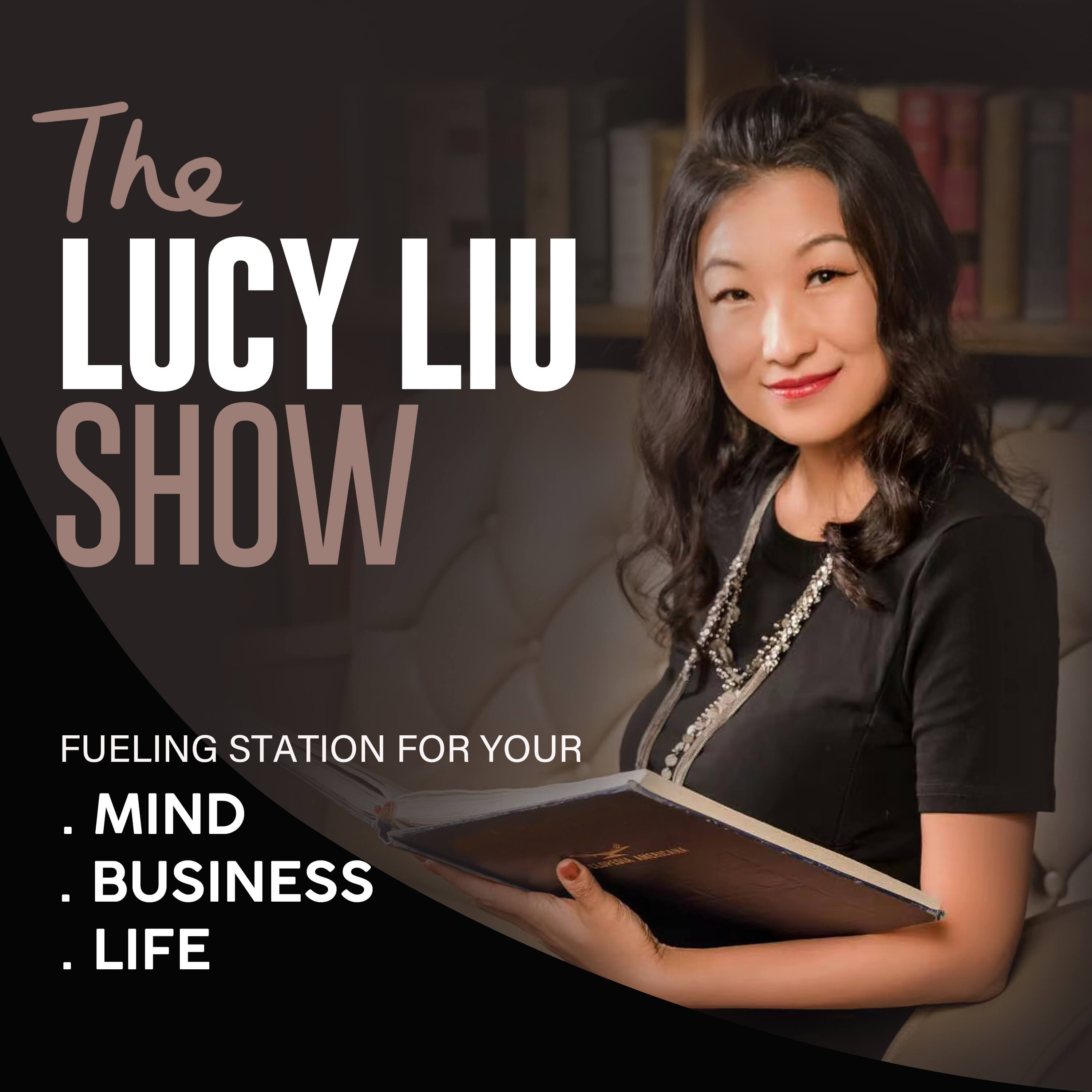
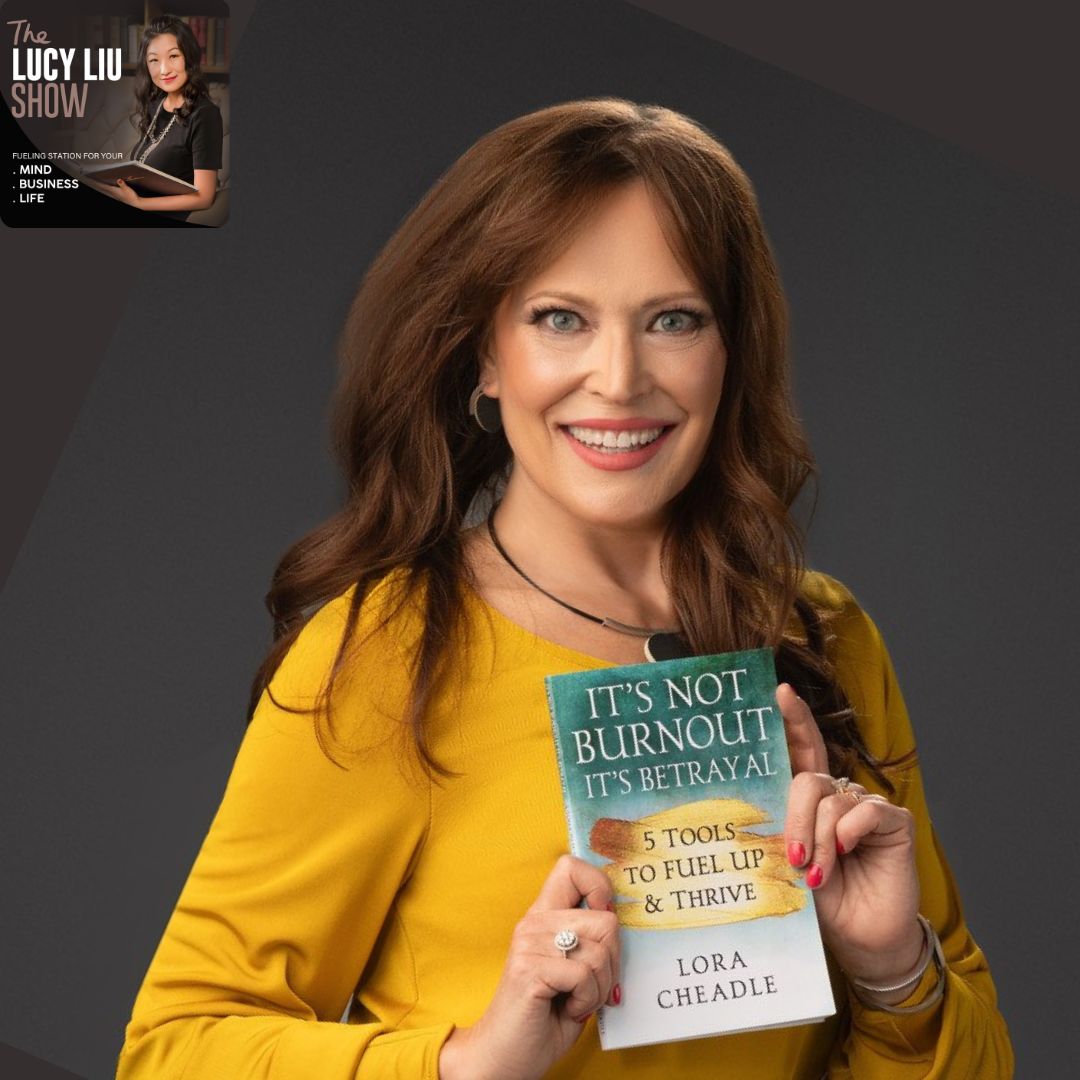
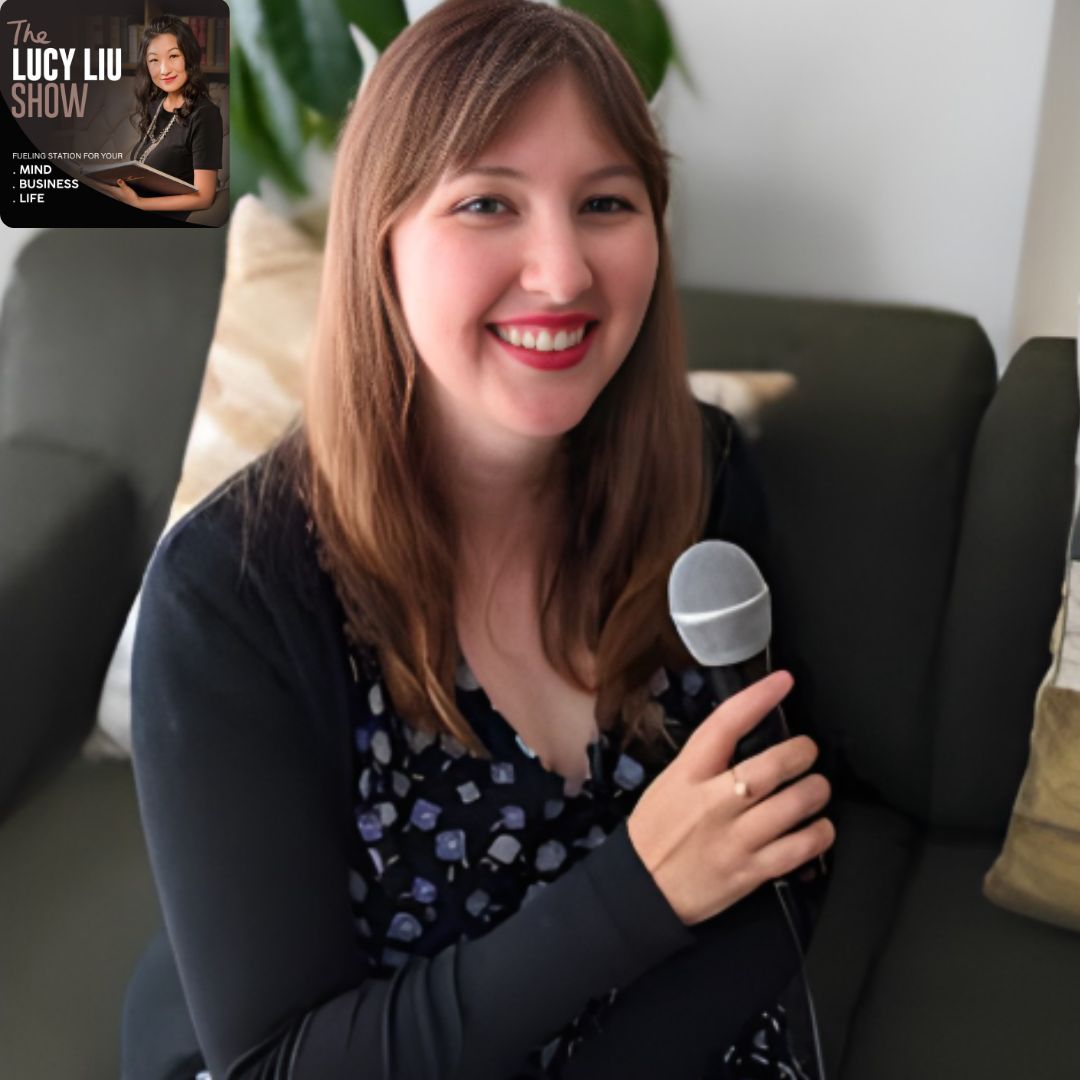
 Lucy Liu is a master life coach helping women uplevel in business and life to confidently live an epic life! She is an unshakable optimist, wife, mom, entrepreneur, workshop facilitator, motivational speaker, best selling author and podcast host of The Lucy Liu Show.
Entrepreneurs & high achievers hire her to see clarity and take quantum leaps FAST. Because most of them are overthinking, scattered and self-doubting. She's best at helping you get unstuck, make faster decisions and fulfill higher potential. Bottom line: not only make more money and impact, but have more fun and live an EPIC life by design.
She has been featured in Medium, VoyageLA, Elephant Journal, ThriveGlobal, South China Morning Post and dozens of other media outlets.
Lucy Liu is a master life coach helping women uplevel in business and life to confidently live an epic life! She is an unshakable optimist, wife, mom, entrepreneur, workshop facilitator, motivational speaker, best selling author and podcast host of The Lucy Liu Show.
Entrepreneurs & high achievers hire her to see clarity and take quantum leaps FAST. Because most of them are overthinking, scattered and self-doubting. She's best at helping you get unstuck, make faster decisions and fulfill higher potential. Bottom line: not only make more money and impact, but have more fun and live an EPIC life by design.
She has been featured in Medium, VoyageLA, Elephant Journal, ThriveGlobal, South China Morning Post and dozens of other media outlets. 